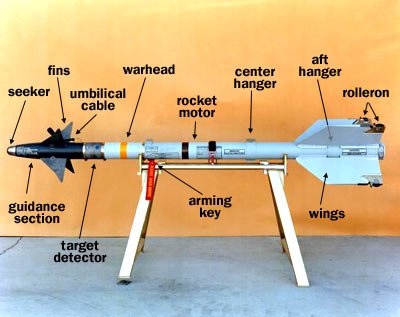Anthony Bean
Well-Known Member
- Joined
- Dec 29, 2013
- Messages
- 67
- Reaction score
- 8
I like to build my rockets to scale. I am working on an AIM-9M Sidewinder Missile project and the thing that makes the sidewinder a great short range missile provides a serious problem for model rocket builders. The front fins pull the CP forward dramatically. In my analysis, the shift in CP can be overcome by shifting the CG using nose weight when the canards are fixed to the rocket body. Unfortunately, the amount of weight required is far greater than I care or want to add to the rocket.

One of the things I thought about doing was to build the canards as free floating. They would be able to move at any angle of attack. I would use bearing sets to allow each of the four canards free and easy movement. In my thinking this would significantly reduce (but not eliminate) the aerodynamic effects of the canard and thus reduce the amount of weight required to bring the CG forward. The problem is I cannot find any mathematics to allow me to calculate the effective fin area for a given angle of attack at a given speed in a free floating envelope. Canards are designed to be fixed or movable to affect airflow, not hide from it. The flight envelope will be subsonic so I don't have to worry about transonic issues.
So I am hoping someone could give me some insight from a similar attempt or equations that may be applied.

One of the things I thought about doing was to build the canards as free floating. They would be able to move at any angle of attack. I would use bearing sets to allow each of the four canards free and easy movement. In my thinking this would significantly reduce (but not eliminate) the aerodynamic effects of the canard and thus reduce the amount of weight required to bring the CG forward. The problem is I cannot find any mathematics to allow me to calculate the effective fin area for a given angle of attack at a given speed in a free floating envelope. Canards are designed to be fixed or movable to affect airflow, not hide from it. The flight envelope will be subsonic so I don't have to worry about transonic issues.
So I am hoping someone could give me some insight from a similar attempt or equations that may be applied.








